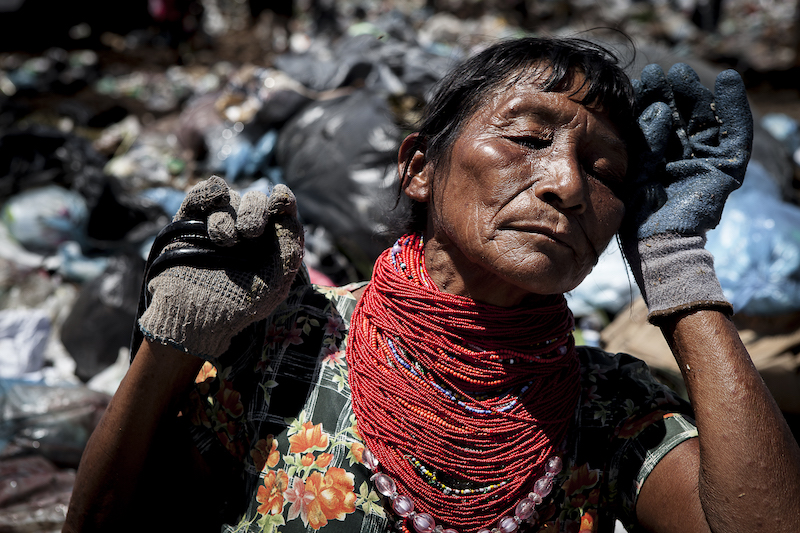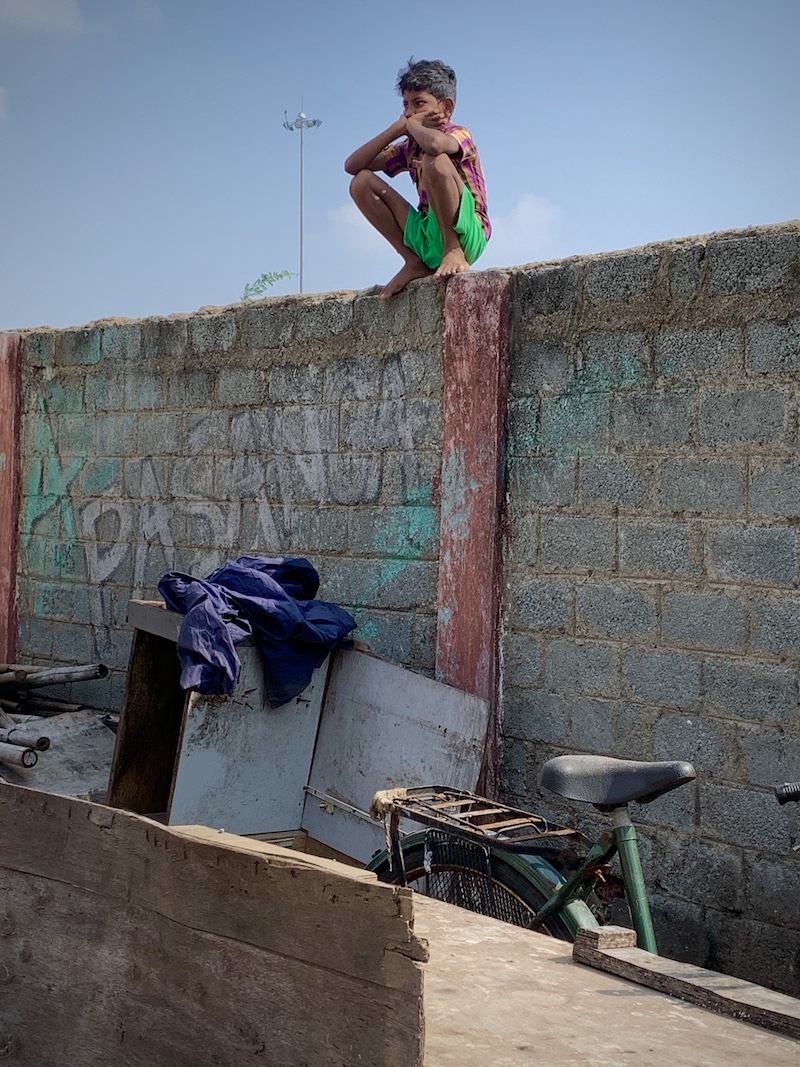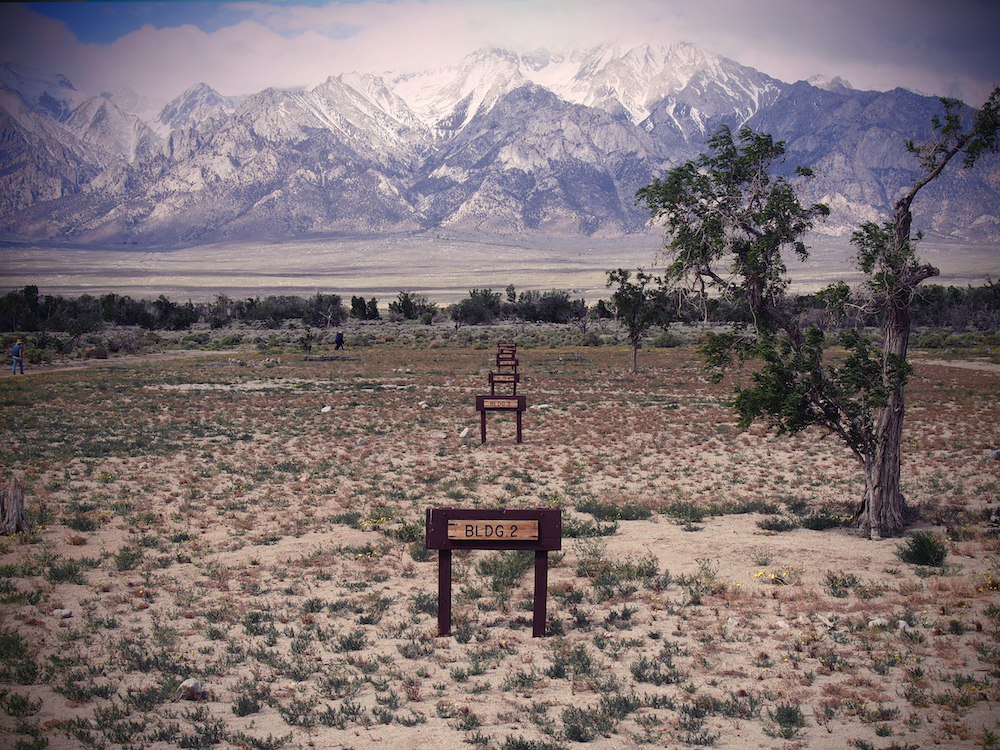The Rachel Tanur Memorial Prize for Visual Sociology recognizes students in the social sciences who incorporate visual analysis in their work. The contest is open worldwide to undergraduate and graduate students (majoring in any social science). It is named for Rachel Dorothy Tanur (1958–2002), an urban planner and lawyer who cared deeply about people and their lives and was an acute observer of living conditions and human relationships. The contest is supported by a grant from the Mark Family Foundation.
The 2020 competition winners are Henry Moncrieff Zabaleta’s “Warao Queen: Challenging Beauty in Venezuela,” Pranathi Diwakar’s “Writing on the Wall,” and Desirée Valadares’s “Absent Presence: Residential Barracks at Manzanar National Historic Site.” Here, the winners give us a look behind the lens and explain the inspiration behind their submissions.
2020 First Prize: Henry Moncrieff Zabaleta
Warao Queen: Challenging Beauty in Venezuela
Warao Queen: Challenging Beauty in Venezuela is a photograph taken in my year-long fieldwork at a landfill in Ciudad Guyana—the urban, mining, and hydroelectric pole at the southeast of the Bolivarian Republic. The stigmatization of this place is cruel and unfair. The privileged classes see it as an “uninhabited,” “putrefied space,” or a “prohibited area.” The essay I submitted to the Rachel Tanur Memorial Prize was the perfect opportunity to explore the validity of this reputation. Visual sociology allowed me to capture the dignity portrayed by an Indigenous worker. Estrella, the woman depicted in the photo, represented a powerful statement of resistance before the camera. In a country that characterizes itself as “egalitarian” and “socialist” but holds on to stereotypical beauty ideals and unevenly distributes its oil wealth, she is beautiful. This photograph challenges the image of Venezuela perpetuated by media outlets as a failing state facing humanitarian crises. It proposes “another visualization” through a sociological lens that intersects class, gender, nationality, and ethnicity.
Rachel Tanur’s legacy inspires social science researchers, especially those who naturally have a photographic eye and a theoretical mind. My commitment is to bring together photography and sociological approaches when conducting ethnographic work in any context to better understand the symbolic suffering of young people living in the “dangerous territories” of cities in Venezuela, France, and Mexico.
Read Henry’s essay and full submission on the Rachel Tanur Memorial Prize for Visual Sociology website.
2020 Second Prize: Pranathi Diwakar
Writing on the Wall
I captured Writing on the Wall when I was invited to a music video shoot as part of my ethnographic research project on musical practice, caste identity, and urban life in the southern Indian city of Chennai. Gaana musicians traditionally perform at funerals, but popular Gaana songs are often autobiographical and convey the contours of life in the city. Gaana songs challenge the discrimination meted out by privileged urban residents toward Gaana music, musicians, and slum residents. This photograph seeks to capture greater nuance in the representation of life in slums by taking seriously how participants in this musical world wish to represent themselves. I paired my photograph with Rachel Tanur’s image of street musicians on an Italian street, which suggests motion and sound in its composition of musicians in action. I chose this photo as a counterpoint to illustrate how differently the street is imagined and occupied by artists whose presence on the street is deemed legitimate. With this entry, I hoped to highlight how marginal urban residents imagine themselves, rather than recreate tired visuals of abject poverty.
Read Pranathi’s essay and full submission on the Rachel Tanur Memorial Prize for Visual Sociology website.
2020 Third Prize: Desirée Valadares
Absent Presence: Residential Barracks at Manzanar National Historic Site
This photograph belongs to a series that documents sites of World War II confinement or internment landscapes on the West Coast of the United States and Canada. I used photography as a method to study these ruins and landscapes from a reflexive, embodied, and engaged ethnographic practice as I attended annual pilgrimages to World War II confinement sites organized by the Japanese American and Canadian community from 2016–2018. These pilgrimages brought me to former internment sites, where Japanese civilians were detained in wartime, in remote parts of California, Colorado, Idaho, Wyoming, and Arizona in addition to Interior British Columbia.
Manzanar National Historic Site (pictured above) drew my attention not only to culturally-specific commemorative practices but also pointed to the various and often complicated forms of historic site designations that currently enshrine these lands. I paired my image with Rachel Tanur’s photograph of an image of Maya ruins in the Yucatan. I understood her image as critical commentary on tourism, archaeology, national heritage, memory, and Indigeneity. In the spirit of Tanur, I use photography and visual analysis in my dissertation project, which centers on World War II incarceration sites outside of the Lower 48 states. I study the process of national heritage-formation in former territories such as Hawaiʻi and Alaska, and provinces in western Canada where wartime ruins are recovered, remembered, and federally recognized amidst ongoing Indigenous land claim settlements.
Read Desirée’s essay and full submission on the Rachel Tanur Memorial Prize for Visual Sociology website.
The photos that inspired the winning essays
Rachel Tanur’s photos that inspired the winning submissions from the 2020 competition.
Winners of the 2020 Rachel Tanur Memorial Prize
Henry Moncrieff Zabaleta is Venezuelan and a doctoral candidate in sociology at Universidad Nacional Autónoma de México (UNAM). His research interests are documentary photography as a tool for visual sociology, urban ethnography of criminalized areas, and belongings of young people who live in the poor peripheries of Latin America. Follow him on Instagram: @henrymoncrieff.
Pranathi Diwakar is a PhD candidate in sociology at the University of Chicago, specializing in urban and cultural sociology. Her research explores urban processes, cultural spaces, and social inequality. Her current project focuses on musical spaces, events, and practices in Indian cities, and investigates how cultural practices are mobilized around articulations of caste identity and group boundary-making. She previously received a master’s degree in development studies from the Indian Institute of Technology, Madras. Her research has been funded by the Social Science Research Council’s International Dissertation Research Fellowship, the Center for International Social Science Research at the University of Chicago’s Lloyd and Susanne Rudolph Field Research Grant, and the Committee on Southern Asian Studies at the University of Chicago. Her writing has appeared in City & Community and Economic & Political Weekly.
Desirée Valadares is a Canadian-trained landscape architect and architectural history PhD student at UC Berkeley. She studies the politics of preserving subsurface and surface ruins at three remote World War II confinement landscapes in proximity to the urban centers of Honolulu, Juneau, and Vancouver. Her dissertation is attentive to federal preservation policy and cultural heritage law as it intersects with Indigenous land claims/Aboriginal title and Asian North American (Japanese American + Canadian) redress and war memory.


















